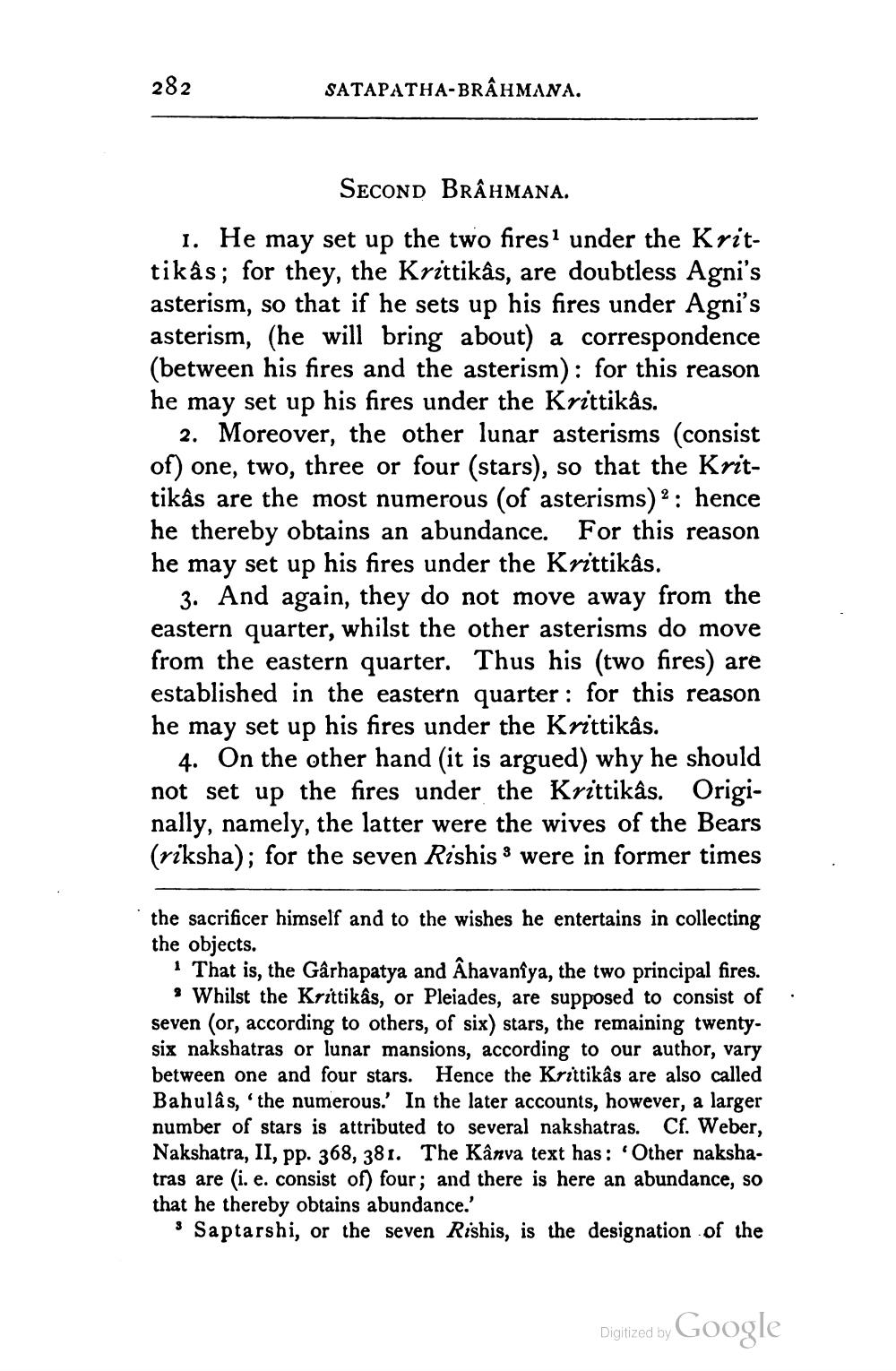________________
282
SATAPATHA-BRAHMANA.
SECOND BRÂHMANA. 1. He may set up the two fires under the Krittikâs; for they, the Krittikäs, are doubtless Agni's asterism, so that if he sets up his fires under Agni's asterism, (he will bring about) a correspondence (between his fires and the asterism): for this reason he may set up his fires under the Krittikas.
2. Moreover, the other lunar asterisms (consist of) one, two, three or four (stars), so that the Krittikâs are the most numerous (of asterisms) 2: hence he thereby obtains an abundance. For this reason he may set up his fires under the Krittikas.
3. And again, they do not move away from the eastern quarter, whilst the other asterisms do move from the eastern quarter. Thus his (two fires) are established in the eastern quarter : for this reason he may set up his fires under the Krittikas.
4. On the other hand (it is argued) why he should not set up the fires under the Krittikâs. Originally, namely, the latter were the wives of the Bears (riksha); for the seven Rishis : were in former times
the sacrificer himself and to the wishes he entertains in collecting the objects.
That is, the Gârhapatya and Ahavanîya, the two principal fires. 9 Whilst the Krittikâs, or Pleiades, are supposed to consist of seven (or, according to others, of six) stars, the remaining twentysix nakshatras or lunar mansions, according to our author, vary between one and four stars. Hence the Krittikâs are also called Bahulâs, 'the numerous.' In the later accounts, however, a larger number of stars is attributed to several nakshatras. Cf. Weber, Nakshatra, II, pp. 368, 381. The Kânva text has: Other nakshatras are (i. e. consist of) four; and there is here an abundance, so that he thereby obtains abundance.'
3 Saptarshi, or the seven Rishis, is the designation of the
Digitized by Google




